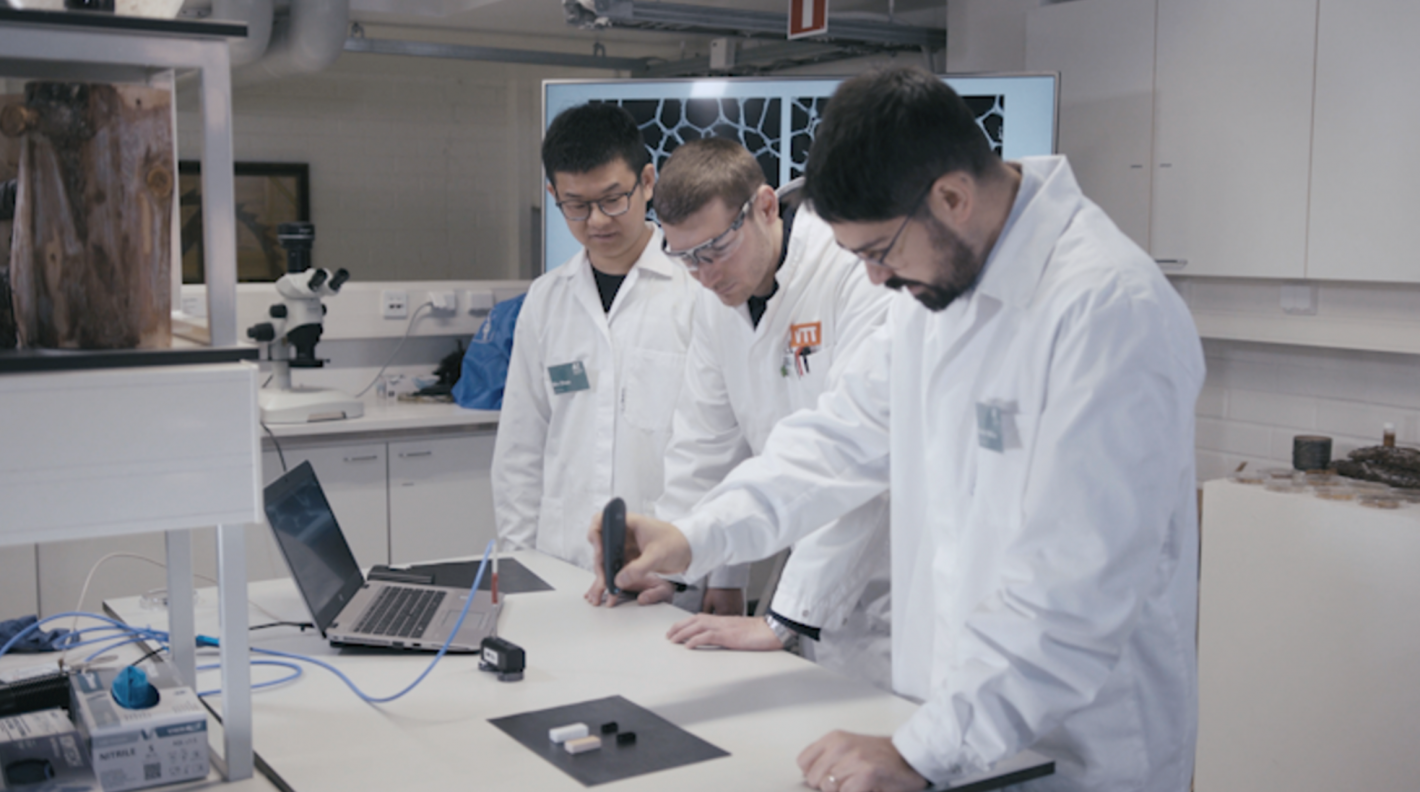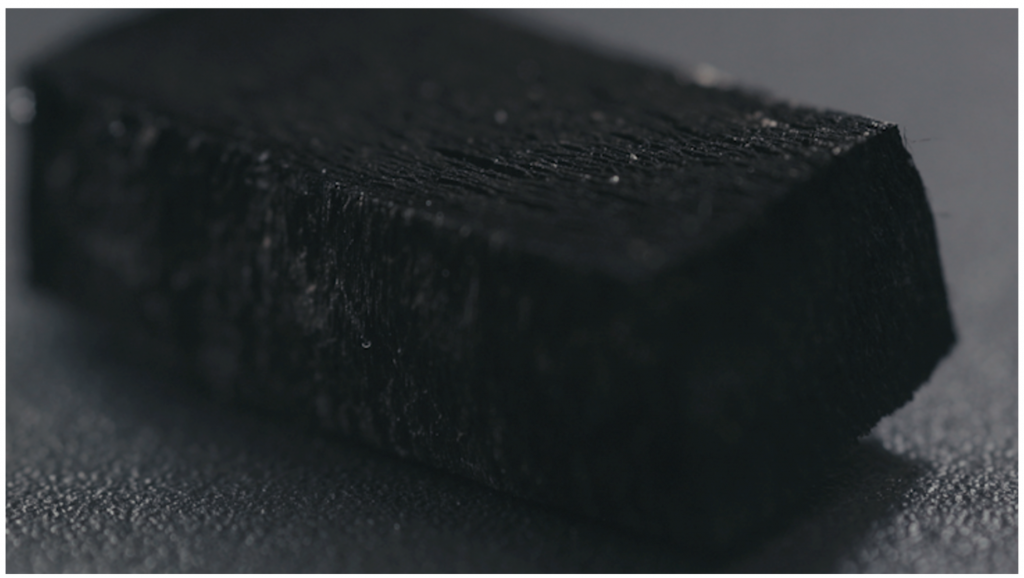Unlocking the Mysteries of Super Black Materials: A novel wood-based solution

Blog - Published 11.12.2023
In the ever-evolving world of science and technology, there are certain phenomena that continue to captivate the minds of scientists, artists, and the general public alike. One such phenomenon is the enigmatic world of super black materials. These materials, as the name suggests, possess the remarkable ability to absorb an astonishing amount of light, rendering them incredibly dark.
Super black features have arisen in nature for various reasons including camouflage, thermoregulation and to assist social interactions among animals. These are the result of perfectioned combinations between light-absorbing chemical compounds with light-entrapping structures. Researchers were able to recreate such super black structures, and their unparalleled light absorption capacity, making them invaluable in various applications, from enhancing the performance of solar panels to reducing the noise signal in telescopes used in space exploration. However, like all scientific endeavours, they come with their own set of limitations.
Record breaking super black wood
Current super black materials are structures built up from tiny elementary building blocks – a process called bottom-up synthesis. Such processes are usually time-demanding, energy intensive and rely on synthetic precursors. Nevertheless, although there have been some improvements, most super black materials are still sensitive to touch, thus limiting their real-life applications. Recognizing these limitations, scientists at Aalto University and VTT Technical Research Centre of Finland set out to create a wood-based material with ultra-low light reflectance, a fully bio-based “super black” material. The team has harnessed the natural properties of wood to develop a bio-based alternative to existing super black materials. This innovative approach promises to be a strong, nontoxic material that is capable of absorbing an astounding 99.65% of light, in effect breaking the record for the blackest solid wood material ever reported.
How does this transformation from ordinary wood to super black material occur?
“In our research we convert the natural carbon structure of wood, which is mostly in a carbohydrate configuration, into a light-absorbing graphitic material. At the same time, we promoted significant structural changes in the material, to develop light-entrapping features. Only after combining chemistry and nano-structure we were able to achieve super black wood.” Bruno Mattos, Senior Scientist, Aalto University.
The key to success lies in tailoring the chemistry to complement the wood’s micro-structure, which has been finely tuned by nature itself. This approach eliminates the need to design a new structure from scratch; instead, it capitalizes on the existing design and adapts it to the desired dimensions.
Harnessing the natural imperfections of wood
Interestingly, the natural imperfections found in cellulose fibres within wood play a crucial role in enhancing light absorption. Unlike many super black materials characterized by “perfect cylinders that are highly aligned and short”, the natural imperfections in wood contribute to better light entrapment. This unique property significantly improves the material’s light absorption capabilities.
A close examination with an electron microscope of the nanostructure of this material reveals a fascinating picture. As the carbonization temperature is increased, a new structure emerges directly from the wood cell wall.
“Wood has been carbonized before, resulting in black materials but never super black. This is because the carbonization temperature and the content of lignin (the cement of wood) play a big role. When we adjust the lignin content and improve the carbonization temperature, we see a new structure directly generated from the wood cell wall, much sharper, and with dimensions changing from the micron to nanoscale. So, this means that light scattering gets suppressed, resulting in a much lower overall light reflectance… in the super black level now” Bin Zhao, Doctoral Researcher, Aalto University
In fact, the light absorption of super black wood can be compared with the light penetration in a natural forest. A forest of average size is already much darker than an open field, but now imagine that the trees of this forest are several kilometres tall instead of dozens of meters. In this situation the aspect ratio, which is the ratio between the height and the space between the trees, is much higher. In this situation the forest would be several times darker simply because light cannot reach the ground as it will be just lost upon multiple reflections through the walls of the trees.
New applications
What sets this innovative approach apart is that it is easier to work with compared to other super black materials. This quality opens up a world of possibilities, making it suitable for a wide range of applications beyond what was previously possible. The research conducted by the FinnCERES Flagship team, doesn’t merely push the boundaries of super black materials; it lays a solid foundation for further innovation in wood-based optics.
“By understanding the intricate relationship between wood’s structure and chemistry and its optical performance, we gain valuable insights into engineering fiber-based materials with diverse applications.” Alexey Khakalo, Senior Scientist, VTT Technical Research Centre of Finland
Agenda2030
This project involves innovation in materials science and engineering, specifically in the development of a bio-based “super black” material using wood. It offers a sustainable and non-toxic alternative to traditional super black materials, which can have broad applications in various industries, from optical systems to solar panels and space exploration. The innovation in wood optics and material development contributes to progress in industry, innovation, and infrastructure, which is at the core of UN SDG 9.



